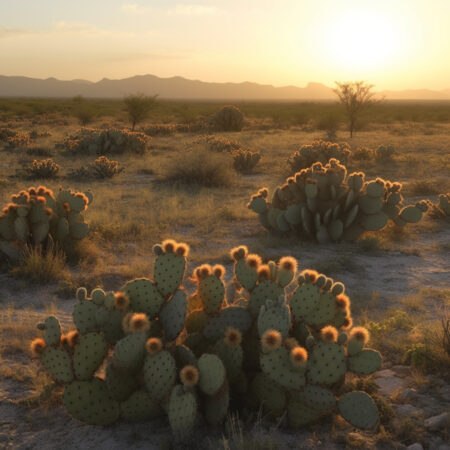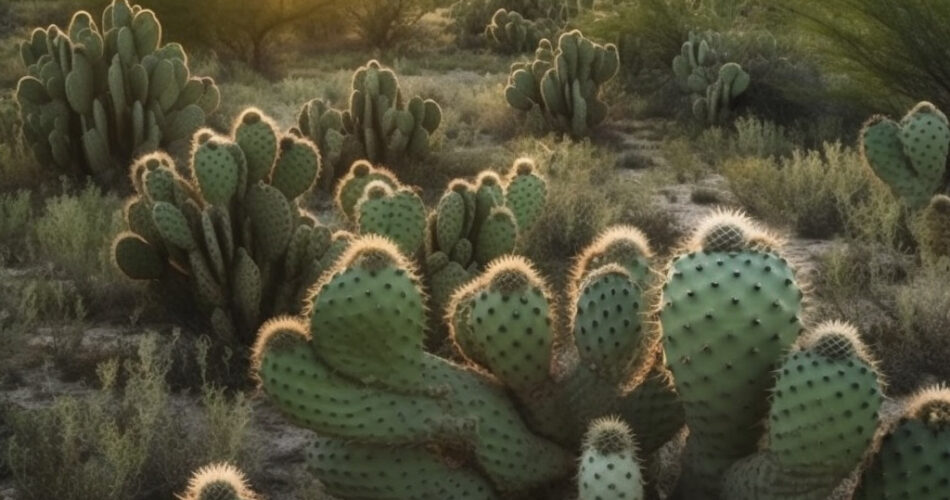Key Takeaways:
- Cactus has been a vital part of sustainable practices for centuries in arid regions
- Native American cultures used various cactus species for food, medicine, and crafting
- Cactus symbolizes endurance, adaptability, and strength in different cultures
- Cactus is a sustainable food source rich in fiber, vitamins, and antioxidants
- Nopales can be cooked and added to various dishes, while prickly pear fruits can be used to make jams and beverages
- Cactus farming practices promote sustainability by requiring minimal water and chemicals
- It has medicinal properties, aiding in digestion, managing blood sugar levels, and reducing inflammation
- It contains antioxidants and exhibits anti-inflammatory properties
- It can be incorporated into wellness routines through supplements, juices, or homemade remedies
- Cacti are low-maintenance plants for eco-friendly gardening and landscaping
- It helps create drought-tolerant landscapes, reducing water consumption
- Caring for its plants involves well-draining soil, proper watering, and suitable sunlight conditions
- It is a valuable resource for sustainable living, connecting with ancient traditions and the environment
1. The History and Cultural Significance of Cactus
The Origins of Cactus in Sustainable Practices
Cactus has been a vital part of sustainable practices for centuries, particularly in arid and desert regions. The unique ability of cactus to thrive in harsh conditions with minimal water requirements made it an ideal plant for early civilizations to utilize in sustainable ways. The practice of incorporating cactus into various aspects of life, including food, medicine, and construction, originated in regions such as Central America, Mexico, and the southwestern United States.
Traditional Uses of Cactus in Native American Cultures
Native American cultures have long recognized the value of cactus as a sustainable resource. Tribes like the Apache, Navajo, and Hopi used different species of cactus for a variety of purposes. The Apache, for example, utilized the fibers from the stems of certain cactus varieties to create ropes and baskets. The Navajo used the pads of the prickly pear cactus as a food source and ground the seeds into flour. The Hopi utilized the spines of cactus for crafting tools and used the pads for nutrition and medicine.
Cactus Symbolism and Representation in Different Cultures
Cactus holds significant symbolism in various cultures around the world. In Mexican culture, for example, the cactus is associated with endurance, resilience, and protection. It is often used as a symbol of national pride and is featured prominently in artwork and traditional celebrations. In Native American cultures, cactus symbolizes adaptability, strength, and the ability to thrive in difficult circumstances. The cultural significance of cactus further highlights its importance in sustainable practices across different regions.
2. Cactus as a Sustainable Food Source
Exploring the Nutritional Benefits
Cactus, particularly the prickly pear variety, offers numerous nutritional benefits. The pads, also known as nopales, are rich in fiber, vitamin C, calcium, and antioxidants. They also have a high water content, which makes them hydrating and refreshing. Additionally, prickly pear fruits, known as tunas, are a good source of vitamin E, magnesium, and potassium. Incorporating cactus into your diet can provide essential nutrients while supporting sustainable farming practices.
Traditional and Modern Culinary Uses
Cactus has a long history of culinary use in various cuisines. In Mexican and Southwestern cuisine, nopales are often cooked and added to dishes such as tacos, salads, and salsas. The slimy texture of the cactus pads diminishes when cooked, resulting in a tender, mildly flavored ingredient. Prickly pear fruits can be used to make jams, jellies, beverages, and even ice cream. In modern times, cactus-based products such as juices and powders have emerged, offering convenient ways to incorporate cactus into everyday diets.
How Cactus Farming Practices Promote Sustainability
Cactus farming practices align with sustainable agricultural principles due to their low water requirements and minimal need for chemical inputs. Cacti are well-suited to arid climates and can thrive with minimal irrigation. Their deep roots enable them to access water deep below the surface, reducing the need for frequent watering. Additionally, cacti have evolved to efficiently utilize available water by storing it in their fleshy stems and pads, making them an environmentally friendly crop choice in water-scarce regions.
3. Medicinal Properties and Health Benefits of Cactus
Research-Backed Uses of Cactus in Traditional Medicine
Traditional medicine practices across different cultures have recognized the medicinal properties of cactus. Research has supported various uses of cactus in treating ailments such as diabetes, inflammation, and high cholesterol. The high fiber content of cactus can aid in digestion and help manage blood sugar levels. Additionally, the antioxidants present in cactus have been shown to have anti-inflammatory properties, potentially benefiting overall health and wellness.
Antioxidant and Anti-Inflammatory Properties of Cactus
Cactus contains several antioxidants, including flavonoids, phenolic compounds, and betalains, which contribute to its vibrant colors. These antioxidants help protect the body against oxidative stress and reduce the risk of chronic diseases. Cactus also exhibits anti-inflammatory properties, thanks to the presence of compounds like betalains. These properties make cactus a valuable addition to a healthy lifestyle and may contribute to the prevention of various health conditions.
Incorporating Cactus into Your Wellness Routine
There are numerous ways to incorporate cactus into your wellness routine. Consuming cactus-based products, such as supplements or juices, can provide the potential health benefits without the need for preparatory steps. Alternatively, you can explore traditional practices such as preparing homemade remedies using fresh cactus pads or extracting the gel from the plant. It is essential to consult with a healthcare professional before using cactus for medicinal purposes to ensure safe and appropriate use.

4. Cactus in Eco-Friendly Gardening and Landscaping
Varieties for Low-Maintenance Gardens
Cacti are an excellent addition to low-maintenance gardens and landscaping. With their ability to withstand drought conditions and thrive with minimal care, they provide a sustainable and visually appealing option for outdoor spaces. Some popular cactus varieties for low-maintenance gardens include the Golden Barrel Cactus, Prickly Pear Cactus, and Hedgehog Cactus. These plants require little water, are resistant to pests, and add a touch of unique beauty to any garden.
Creating Drought-Tolerant Landscapes
Cactus is a key component in creating drought-tolerant landscapes. By incorporating various species of cactus, along with other drought-resistant plants, landscaping can be designed to reduce water consumption significantly. This not only helps conserve water but also minimizes the need for artificial irrigation systems. Proper planning, utilizing native cactus species, and implementing water-efficient strategies can promote sustainable landscaping practices that thrive in arid regions.
Tips for Caring and Propagating Cactus Plants
To ensure the well-being of your cactus plants, it is essential to understand their specific care requirements. Some general tips for caring for cactus plants include providing well-draining soil, avoiding overwatering, and placing them in appropriate sunlight conditions. Propagating cactus can be done through various methods such as stem cuttings or seeds, each with its own set of considerations. Researching and understanding the specific needs of the cactus species you are cultivating will maximize their growth and longevity.
By exploring the history, cultural significance, and practical applications of cactus, it becomes evident that this unique plant plays a significant role in early sustainable practices. From providing sustenance and medicinal benefits to contributing to eco-friendly gardening and landscaping, cactus continues to be a valuable resource for sustainable living. Incorporating cactus into our lives not only supports local ecosystems but also offers an opportunity to connect with ancient traditions and natural wisdom. Embracing the versatility and resilience of cactus can help foster a more sustainable and harmonious relationship with our environment.
FAQ
Question: What are the traditional uses of cactus in Native American cultures?
Answer: Native American cultures used different species of cactus for various purposes.
For example, the Apache used cactus fibers to create ropes and baskets, the Navajo used prickly pear cactus pads as a food source and ground the seeds into flour, and the Hopi utilized cactus spines for crafting tools and used the pads for nutrition and medicine.
Question: What is the cultural significance of cactus?
Answer: In Mexican culture, cactus symbolizes endurance, resilience, and protection. It is often associated with national pride and celebrated in artwork and traditional celebrations. In Native American cultures, cactus symbolizes adaptability, strength, and the ability to thrive in difficult circumstances.
Question: What are the nutritional benefits of cactus?
Answer: Cactus, particularly the prickly pear variety, is rich in fiber, vitamin C, calcium, and antioxidants. It also has a high water content, making it hydrating and refreshing. Prickly pear fruits, known as tunas, are a good source of vitamin E, magnesium, and potassium. Incorporating cactus into your diet can provide essential nutrients while supporting sustainable farming practices.
Question: How do cactus farming practices promote sustainability?
Answer: Cactus farming practices align with sustainable agricultural principles due to their low water requirements and minimal need for chemical inputs. Cacti are well-suited to arid climates and can thrive with minimal irrigation. Their ability to efficiently utilize available water and store it in their stems and pads makes them an environmentally friendly crop choice in water-scarce regions.
Question: What are the medicinal properties of cactus?
Answer: Research has supported various uses of cactus in traditional medicine, including managing blood sugar levels, aiding digestion, and reducing inflammation. Cactus contains antioxidants and exhibits anti-inflammatory properties due to compounds like flavonoids, phenolic compounds, and betalains. These properties contribute to overall health and wellness.
Question: How can cactus be incorporated into wellness routines?
Answer: Cactus can be incorporated into wellness routines through consuming cactus-based products like supplements or juices. Additionally, traditional practices such as preparing homemade remedies using fresh cactus pads or extracting the gel from the plant can be explored. It is important to consult with a healthcare professional before using cactus for medicinal purposes.
Question: What are some popular cactus varieties for low-maintenance gardens?
Answer: Some popular cactus varieties for low-maintenance gardens include the Golden Barrel Cactus, Prickly Pear Cactus, and Hedgehog Cactus. These plants require little water, are resistant to pests, and add unique beauty to outdoor spaces.
Question: What are some tips for caring for cactus plants?
Answer: To care for cactus plants, it is important to provide well-draining soil, avoid overwatering, and place them in appropriate sunlight conditions. Each cactus species may have specific care requirements, so researching and understanding their needs will maximize their growth and longevity.




Comments